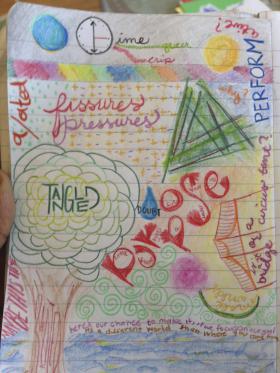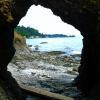“interacting with our own silence”
By Anne DalkeFebruary 24, 2015 - 10:05

Name--I’m glad you’re finding in this assignment space for thoughts you can’t find time for, “conversations you would not have had with yourself otherwise.” Curious to me that this seems ecological, but not academic, to you, and I’d like to push on that binary (as all others!). As a starter, it seems that this exercise is so tangled for you because you are struggling with “not knowing what you’re supposed to be noticing.” But if thinking-and-being ecological means letting go of focus and purpose, open to what arises…









